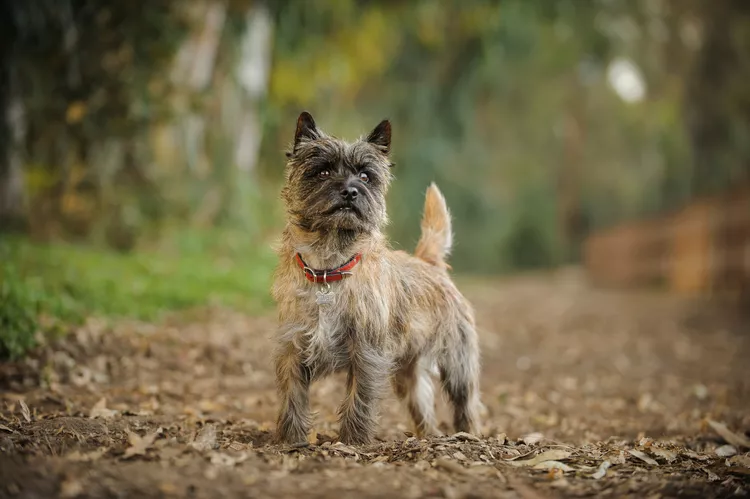
The cairn terrier is a small Scottish dog breed with a round head, short legs, coarse fur, and small, pointed ears. These dogs are smart, energetic, affectionate, and known for their cheerful personalities with classic terrier traits. Cairn terriers rose to prominence when one played Dorothy's dog, Toto, in the classic movie The Wizard of Oz.
Learn more about the cairn terrier and decide if this little dog is right for you.
Group: Terrier
Height: 10 to 13 inches (males); 9 to 12 inches (females)
Weight: 13 to 18 pounds
Coat: Double coat with wiry outercoat
Coat Color: Black, brindle, cream, gray, red, silver, wheaten, or any combination with brindle
Life Span: 13 to 15 years
Temperament: Intelligent, courageous, friendly, playful, active
Hypoallergenic: Yes
Origin: Scotland
The cairn terrier breed is hardy, intelligent, and energetic, making them great pets for many homes. With playful personalities, they get along well with children and are loyal to their families, but can sometimes be protective. It's best to socialize these dogs well to help your dog maintain a friendly demeanor with new people. This is not a snuggly lap dog by nature, but they might cuddle with you once they're worn out from exercise. The cairn terrier's spirited nature can also lead to chasing other animals, sometimes getting into tussles with dogs and cats. Thankfully, if introduced carefully, these dogs can coexist happily in a multi-pet household.
Cairn terriers originate from Scotland, particularly the Highlands and Scottish islands. Their history is slightly blurry because many working dogs of this type were once grouped as Scotch Terriers. It wasn't until the 19th century that distinct individual breeds were established and the cairn terrier was named. The cairn terrier is closely related to the Scottish terrier (Scottie) and the West Highland white terrier (Westie), which have similar appearances.
Cairn terriers can be traced back to the island of Skye, where they were used by farmers and gamekeepers to hunt rats and other vermin. They would often root out rodents from under mounds of stones used as memorials or to mark boundaries (often at the top of hills). These mounds are called cairns, and this is where the name for the breed is derived.
The American Kennel Club recognized the breed officially in 1913. The breed became even more popular when Terry the cairn terrier played Toto in the 1939 movie The Wizard of Oz alongside Judy Garland.
Cairn terriers have also been the pets of several famous figures. Wallis Simpson, the Duchess of Windsor, loved the breed, and J. Edgar Hoover (the first Director of the FBI) was a cairn enthusiast.
Known for being robust, independent, friendly, and fun-loving, the cairn is often regarded as an adaptable little family dog. Although they enjoy the company of their humans, they thrive on being active. This small breed is not naturally a lazy house dog—they need considerable exercise and proper training to stay happy and healthy.
While they don't need an extensive amount, cairn terriers should get daily exercise to stay happy and healthy. Plan for 30 minutes to an hour of exercise, such as daily walks or playtime in the backyard. Your cairn terrier will be happiest when allowed to run and play outside, especially when activities involve digging. Many owners give these dogs sandboxes to have fun without making too many holes in the yard.
The playful nature of cairn terriers means they often get along well with children. Joining kids in games is a great way for your dog to stay entertained.
The cairn terrier is considered a hypoallergenic breed and doesn't shed excessively. A weekly brush-out should be enough to keep the coat in good condition. Their fast-growing fur can block their vision and tangle easily if not trimmed regularly. Some owners have their coats hand-stripped to keep them tidy and comfortable. This technique retains the coat's condition and texture as opposed to clipping.
Cairns are very clever little dogs, but their independent temperament also means they can be strong-willed. This breed can be prone to barking excessively, so you may wish to train against this specific behavior. Ongoing positive reinforcement training is necessary to keep Cairns out of trouble; basic obedience lessons can begin when puppies are about eight weeks old. Their intelligence, tenacity, and energy levels help them excel in dog sports like agility training to burn off energy and build a strong bond with their owners.
While cairn terriers can live well in multi-dog households, care should be taken if living alongside small animals like hamsters or rodents. Their heritage as ratters has instilled a strong chase instinct in this breed. Because of these tendencies, they may need extra training time to achieve a solid recall.
Cairns are generally regarded as a healthy breed that can live to a ripe old age. It is not uncommon for this breed to live past 15 years old. However, like all purebred dogs, cairn terriers are susceptible to hereditary health conditions. Choose a responsible breeder who performs genetic tests on prospective parents to help ensure your puppy lives a healthy life.
The following are conditions to be aware of:
Feed your cairn terrier high-quality dog food twice per day. Since this breed is prone to obesity, owners should monitor treats and meal portions to prevent weight gain. Like other breeds, your cairn will also need various nutrients at different stages of life. Talk to your veterinarian to determine the best diet plan for your specific dog based on age, weight, and activity level.
Breed-specific rescues for the cairn terrier are located in various parts of the United States, so prospective adopters should research local rescues to find cairn terriers in need of forever homes. Many similar dogs and mixed breeds can also be found at shelters, so it's helpful to meet the dogs in your region and see if your next best friend is waiting to come home with you.
If you're planning to buy a cairn terrier puppy, it's important to work with a responsible breeder. You should be able to meet the litter's parents, see their living conditions, and learn about their family medical history. Puppies from breeders can cost anywhere from $1,000 to $2,500, but some prices can be as high as $5,000 depending on pedigree and availability.
The national breed club, breed-specific rescues, and the AKC are great resources to start your search:
Cairn terriers are small yet sturdy, energetic, and smart. They make excellent companions for active households, including those with kids or other dogs. Training, exercise, and mental stimulation are all essential to keep these dogs feeling their best.
If you love the cairn terrier, you may also like these similar breeds:
There are plenty of different dog breeds that can suit your lifestyle. With a little research, you can find your next best friend!
Cairn terriers are known for being great family dogs when properly trained. These playful little canines enjoy being around kids and often do well with other dogs or cats when socialized consistently.
Not all cairn terriers will become excessive barkers, but it's common for these dogs to be vocal. If your cairn's barking becomes a problem, training can help to discourage it.
No, the cairn terrier has a low-shedding coat and is considered hypoallergenic. Though no dog is fully hypoallergenic, these dogs produce very little dander around the home and can be good for owners with mild to moderate allergies.
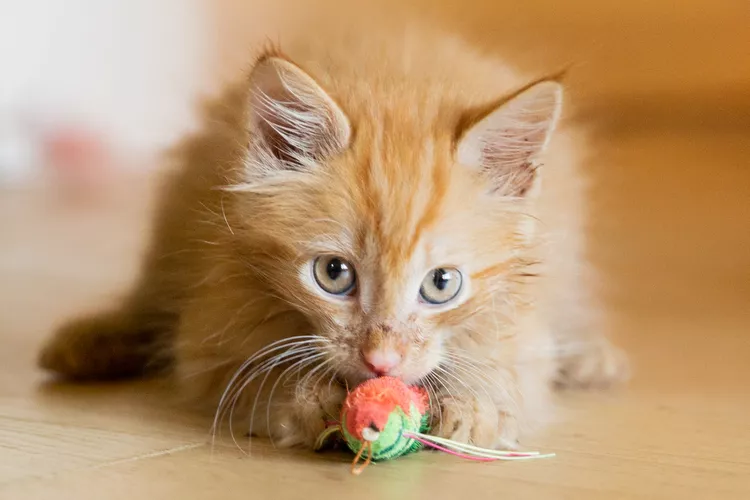
How to Keep Your Kitten Safe While Playing
While letting your kitten play and explore is important to its mental development, you need to make sure that what it's playing with is safe.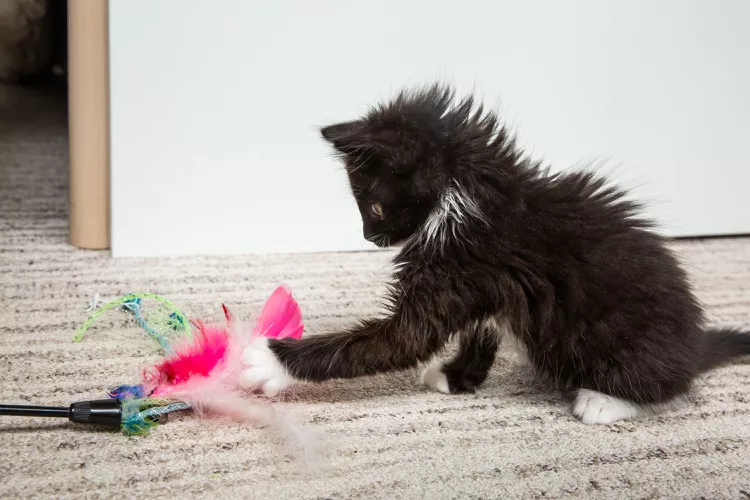
Kitten Development From 6 to 12 Weeks
Learn how kittens develop during the first 6 to 12 weeks and what signs of development you need to look out for with these tips.
5 Common Foods In Your Pantry That Are Not Safe For Your Pets
One potato chip is not going to hurt your pet, but there are other foods that can. Learn which to avoid and some safe foods that can be used as treats.
Fleas in Dogs
If a dog scratches, does that mean it has fleas? These biting bugs are no fun for dogs or their owners. Learn the causes, treatment, and prevention.
Can Dogs Eat Papaya? What to Know About Sharing This Tropical Fruit With Your Pup
Papaya is safe for dogs in moderation, and it can even provide some nutritional value for them. However, too much can cause digestive upset, and it's not suitable to share with dogs with certain health conditions.
Can Dogs Eat Parmesan Cheese?
It's no secret that dogs love cheese, but what kinds of cheese should you avoid? Is Parmesan cheese a good option to treat your pup to?
10 Cat Breeds That Have Blue-Colored Coats
Blue cat breeds have a uniquely colored coat that makes them stand out. The eye-catching blue coat often appears light to dark grey.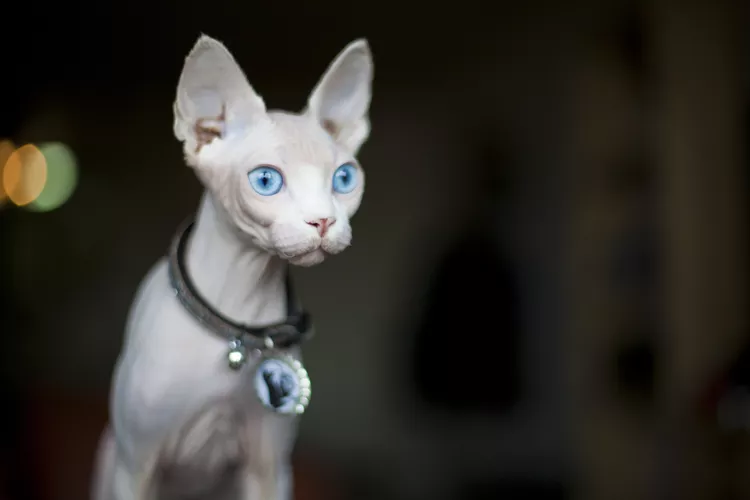
Sphynx: Cat Breed Profile, Characteristics & Care
The sphynx cat is a hairless cat breed known for their playful and affectionate nature. These cats do have special needs. Learn about the sphynx cat breed’s appearance, temperament, health, and care.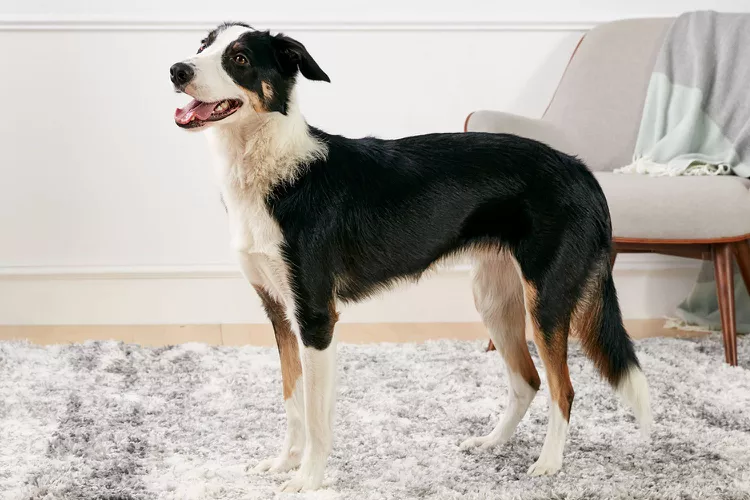
Border Collie: Dog Breed Characteristics & Care
Learn about the border collie, a popular herding breed. They're a smart and energetic dog that's also a great companion to the right pet parent.
Beagle: Dog Breed Characteristics & Care
Learn about the beagle, one of the most popular dog breeds in the world. They are known for being a cheerful, comical, loud, and energetic family dog.
How to Grow and Care for Living Stones
Find out how to grow living stones, unique miniature succulents that look like pebbles. This guide covers how to care for living stone plants, including watering them just right to keep them thriving.
How to Grow and Care for a Money Tree Indoors
Money trees make beautiful, easy-care houseplants. Use this guide to grow a money tree indoors.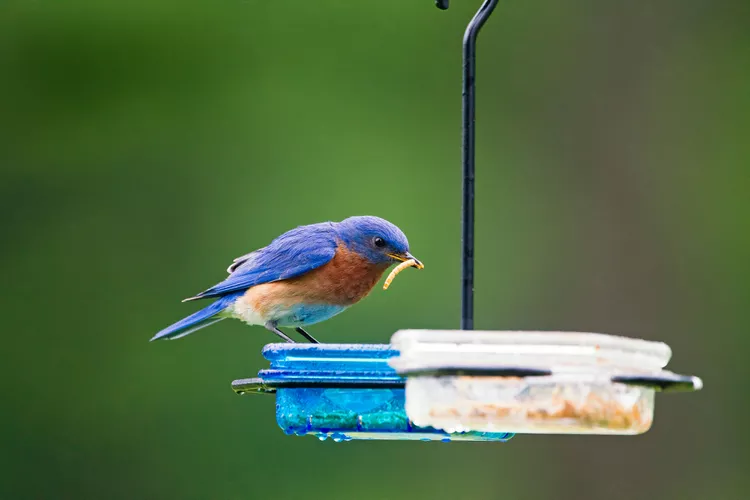
How to Attract Bluebirds to Your Yard: 11 Must-Know Tips
These tips on how to attract bluebirds will help you create a welcoming habitat. Discover the best types of foods, birdhouses, water sources, and more for attracting bluebirds.
How to Propagate Clematis from Cuttings and Layering
Learn how to propagate clematis successfully with this step-by-step guide on two different techniques.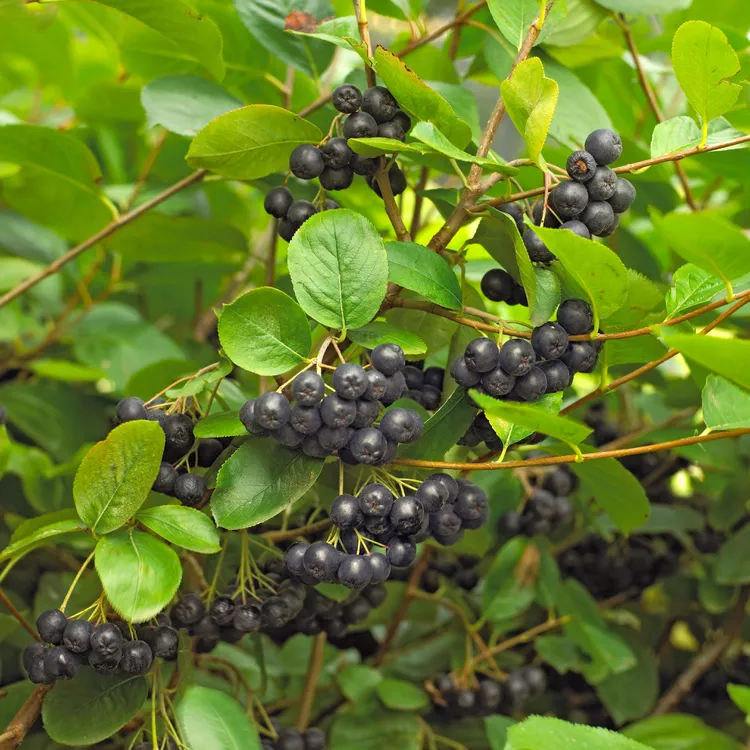
How to Plant and Grow Black Chokeberry
Learn how to use and care for this low-maintenance native shrub, including planting tips and the best types of black chokeberry to grow.
This Low-Water Garden Plan Will Look Vibrant Through Droughts
This low-water garden plan will keep your plants vibrant all throughout the hot, humid summer.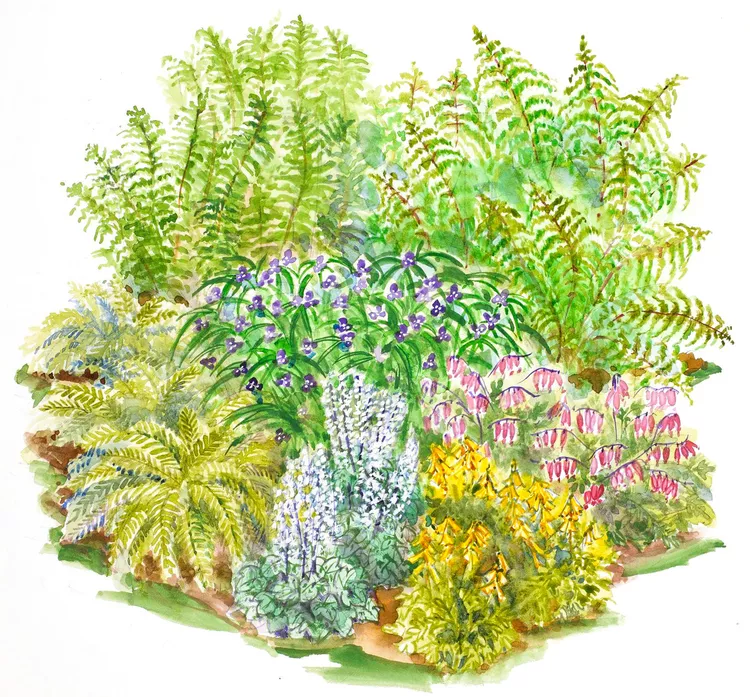
This Woodland Garden Design Overflows with Shade-Loving Plants
Easy-care native ferns add luxurious foliage from spring to fall. Other shade-loving perennials complement the soft textures with colorful blooms.
11 Essential Tips for Growing Vegetables from Seed for Beginners
These beginner-friendly tips on growing vegetables from seed will help you successfully kick off your edible garden in spring.
Should You Use Shredded Rubber Mulch in Your Garden?
Rubber mulch is widely touted as a game changer in landscaping, but does it live up to the hype? Find out the pros and cons of using rubber mulch.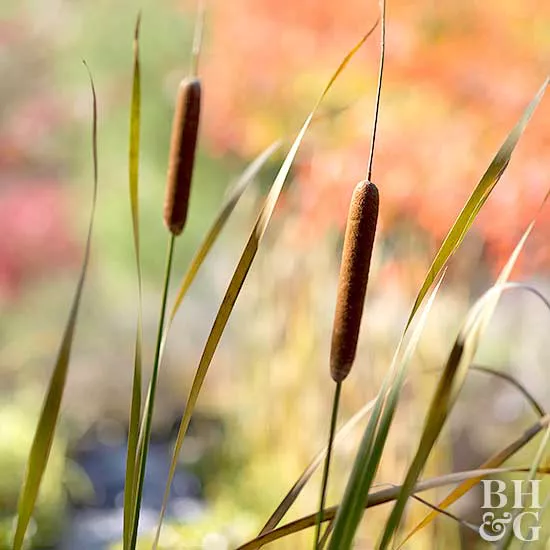
How to Plant and Grow Cattail
Learn to care for this easy-growing aquatic plant, including tips for pruning, propagating, and planting.